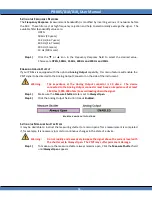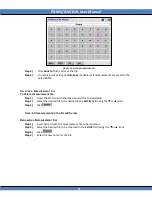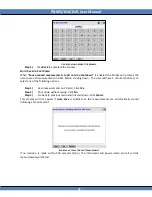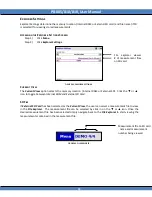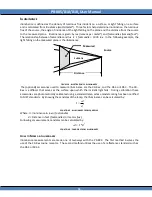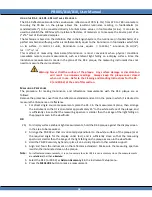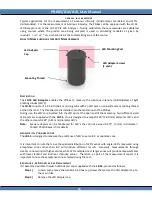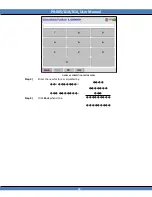
PR-805/810/810
L
User Manual
45
I
LLUMINANCE
Illuminance is defined as the density of luminous flux incident on a surface, or light falling on a surface
and is calculated from
Irradiance (watts/meter²)
. Three factors help determine illuminance: the luminous
flux of the source, the angle of incidence of the light falling on the plane and the distance from the source
to the measured plane. Illuminance is given by
lux (lumens per meter²)
and
footcandles (lumens/foot²).
The relationship between footcandles and lux is:
1 footcandle = 10.76 lux.
In the following example, the
light falling on the measured plane is the illuminance.
Measured
Source
Lumens
Distance
FIGURE 50 - ILLUSTRATION OF ILLUMINANCE
The (optional) accessories used to measure Illuminance are the CR-8xx , and the RS-3 or SRS-3. The CR-
8xx is a diffuser that serves as the surface upon which the incident light falls. During calibration these
accessories are photometrically calibrated using a standard lamp whose candela rating has been certified
to NIST standards. By knowing the candelas of the lamp, the Illuminance can be calculated by:
I
=
cd
d
2
EQUATION 1 - ILLUMINANCE FROM CANDELAS
Where:
I
= Illuminance in
lux
or
footcandles.
d =
Distance in feet (
footcandles
) or meters (
lux
).
Following a measurement, candelas can be calculated by:
cd
=
I
*
d
2
EQUATION 2 - CANDELAS FROM ILLUMINANCE
H
OW TO
M
AKE AN
I
LLUMINANCE
Illuminance measurements are made one of two ways with the PR-8XX. The first method involves the
use of the CR-8xx cosine receptor. The second method utilizes the use of a reflectance standard such as
the RS-3 or SRS-3.




